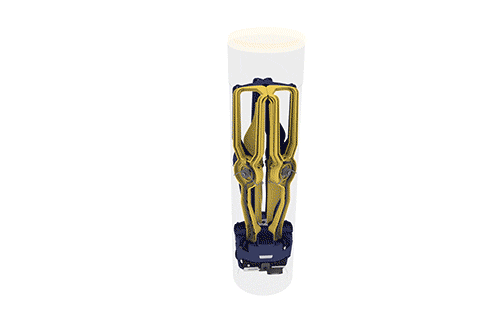
The Fotokite Phi is a fold-up, lightweight drone that launches on Indiegogo today with a pre-sale price of $349. It’s a unique product with a design approach that is likely to create some divisive opinions in the drone community. I got to fly one last week, so let me tell you a little about product and my experience with it.
Why put a leash on a drone?
Simply put, the Fotokite is a quadcopter attached to a retractable leash. When I first heard the idea, I figured it was like a drone with training wheels on it. A fine idea for beginners, but not for me (though in truth, I’ve lost count of the number of drones I’ve wrecked). But after my smugness dissipated and I got my hands on the actual product, I realized what it really is.

The Fotokite is trying to solve the problem of making the lightest, most portable solution for capturing GoPro video from the air. One way to lighten the load down to an impressive 12 ounces is to remove the remote control from the equation, along with the quadcopter’s remote receiver and GPS module.
To operate the Fotokite, you just give the drone a twist, point it where you want to go, and let out the retractable leash (up to 26 feet). When you’re done you reel it back in. As the name implies, it’s like a fancy self-propelled kite with a GoPro stuck on it. That it uses a drone to accomplish this feat isn’t the point.
That said, if you want some movement in your aerial footage, the conventional drone capabilities of this product come in handy. The Fotokite includes two buttons on its leash handle that communicate to the drone over Bluetooth. With some practice, you can use these buttons to adjust the drone’s altitude or move its horizontal position.

Even without these controls, you can simply walk the Fotokite around and make intuitive adjustments by manually adjusting the leash. During my demo, I navigated the Fotokite in a room with an exposed ventilation system in the ceiling and a few pillars that needed to be avoided. Not yet familiar with the two remote buttons, I avoided a few indoor collisions just by pulling on the leash, the same way I might with a kite. I’m certain that if I were piloting an unfamiliar R/C quadcopter around the same room it would have ended in a confetti of plastic propellers raining from above.
But don’t confuse safe and successful operation with a fun drone experience. Sure, there’s some fun in the initial novelty of sending a drone out on a leash, but the Fotokite isn’t built for stunts or speed, it’s built for ease and stability. It is, first and foremost, a GoPro accessory.
In fact, the Fotokite’s GoPro integration goes fairly deep. The built-in GoPro mount is compatible with the Hero 3, 3+, and 4, and allows connected GoPro cameras to draw power directly from the Fotokite’s battery, leaving one less battery to charge. One stretch goal of the Fotokite crowdfunding campaign is to include a GoPro trigger button on the leash handle to remotely trigger the camera. Flight time on the Fotokite is rated at 15 minutes. The drone recharges over the new USB-C spec which can pass up to 100 watts of power for a quick recharge.

Why buy one?
Whether you see the Fotokite’s leash as a feature or a limitation, the product gives you the lightest, most compact way to get your GoPro in the air. That’s the pitch, at least, and at $350 I can see it as a fun accessory to take with you on vacation or some outdoor adventure.
What do you think? If you have any questions about my experience with the Fotokite, let me know in the comments here.
ADVERTISEMENT







